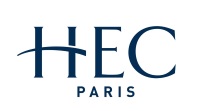No 1196: Some Like it Free: Innovators' Strategic Use of Disclosure to Slow Down Competition
Gonçalo Pacheco-de-Almeida () and Peter B. Zemsky ()
Abstract: Why do some innovators freely reveal their intellectual property? This empirical puzzle has been a focal point of debate in the R&D literature. We show that innovators may share proprietary technology with rivals for free - even if it does not directly benefit them - to slow down competition. By disclosing IP, innovators indirectly induce rivals to wait and imitate instead of concurrently investing in innovation, which alleviates competitive pressure. In contrast with the classical strategy view, our paper also shows that imitators may not always benefit from interfirm knowledge spillovers. Specifically, imitators may want to limit the knowhow that they can freely appropriate from innovators. Otherwise, innovators have fewer incentives to quickly develop new technologies, which, ultimately, reduces the pace and profits of imitation. Our theoretical model contributes to the literature on competitive dynamics of R&D. The main propositions establish testable relationships between strategic variables that are empirically observable.
Keywords: R&D and technology; innovation dynamics; timing games; time compression diseconomies; firm spillovers; capabilities
JEL-codes: D21; M20; O30; O31; O32; O34
45 pages, First version: March 1, 2012. Revised: March 24, 2017.
Full text files
papers.cfm?abstract_id=2025367Full text
Questions (including download problems) about the papers in this series should be directed to Antoine Haldemann ()
Report other problems with accessing this service to Sune Karlsson ().
RePEc:ebg:heccah:1196This page generated on 2025-06-10 11:14:56.

